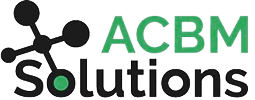Accounts Payable Integration for JD Edwards EnterpriseOne
One thing that makes vendors happier than anything in the world is being paid on time. Getting Accounts Payable streamlined is what makes this possible, and there are many ways the Orchestrator can help. Here’s an example of an integration we built to automatically pull data from a third party AP platform and schedule the creation of all their vouchers on JDE.
Quick Version
Step 1: Connect to FTP Server to retrieve vendor invoice information
Step 2: Groovy script to calculate a unique batch number to be used on all vouchers
Step 3: Pass all information to second orchestration
Step 3A: Enter all voucher information in the Batch Voucher Entry screen in JDE
Step 3B: Run the Batch Voucher Processor to create actual vouchers in JDE from the Batch Voucher Entry
Deeper Dive on How It Works
Retrieving Data from the AP System
All vendors enter their invoices (vouchers) in AVIDxchange which handles all the initial AP interactions with their vendors. We built an orchestration that has a connector that points to the AVID FTP Server.
It performs an FTP connection which pulls a CSV file with all voucher information. Ideally, they would be using a REST API. However, that was not possible in this scenario so an FTP transfer was created. The orchestration runs nightly on the scheduler to automatically pull the CSV file and retrieve all the voucher info.
Adding Necessary Manipulations in the Middle
The next step requires Groovy to calculate a unique batch number to be used on all vouchers. By generating a unique ID to tag on records in JDE based on system date and time, even if it runs multiple times a day we will always be able to identify the specific batch. This step couldn’t go in the lower orchestration level because it needed to be done once per batch rather than being recalculated if we had to rerun the orchestration for some reason.
We also found that in this application amounts had to have the negative sign “-” at the end of the figure instead of the beginning. Usually you can do it at the front, but for batch vouchers we had to use Groovy Script to find any negative numbers, parse it, and reconfigure it at the end of the dollar amount instead.
Moving the Data into the Voucher Generation Phase
Next, the data passes into the batch voucher entry screen. Here, the orchestration enters all the vendor info, total invoice amount along with the GL distribution, amount, and explanation for GL entry. This is where things get a little tricky.
We could not use the Standard Voucher Entry or the Speed Voucher Entry because we needed all vouchers to be in the same batch. There was no way to make that work using either of the two standard programs directly. We also needed to have General Ledger distribution with multiple lines.
In our solution, the batch voucher entry uses a Z-File to load all of the voucher information. These records must be processed using the batch processor in order to move the data from the interface “staging” table to the real tables in JDE.
How Can You Get AP and AR Running Faster?
Once these orchestrations were up and running, they eliminated the need for AP to manually pull data from their system into JDE to process vouchers. Getting vendors paid in a timely manner just became easier. An automated approach also eliminated errors from manually rekeying invoices in JDE.
This example features AVIDxchange, but the principle is the same regardless of what system you use. Contact our team to build the integrations you need to streamline, automate, and improve your accounting workflows.

